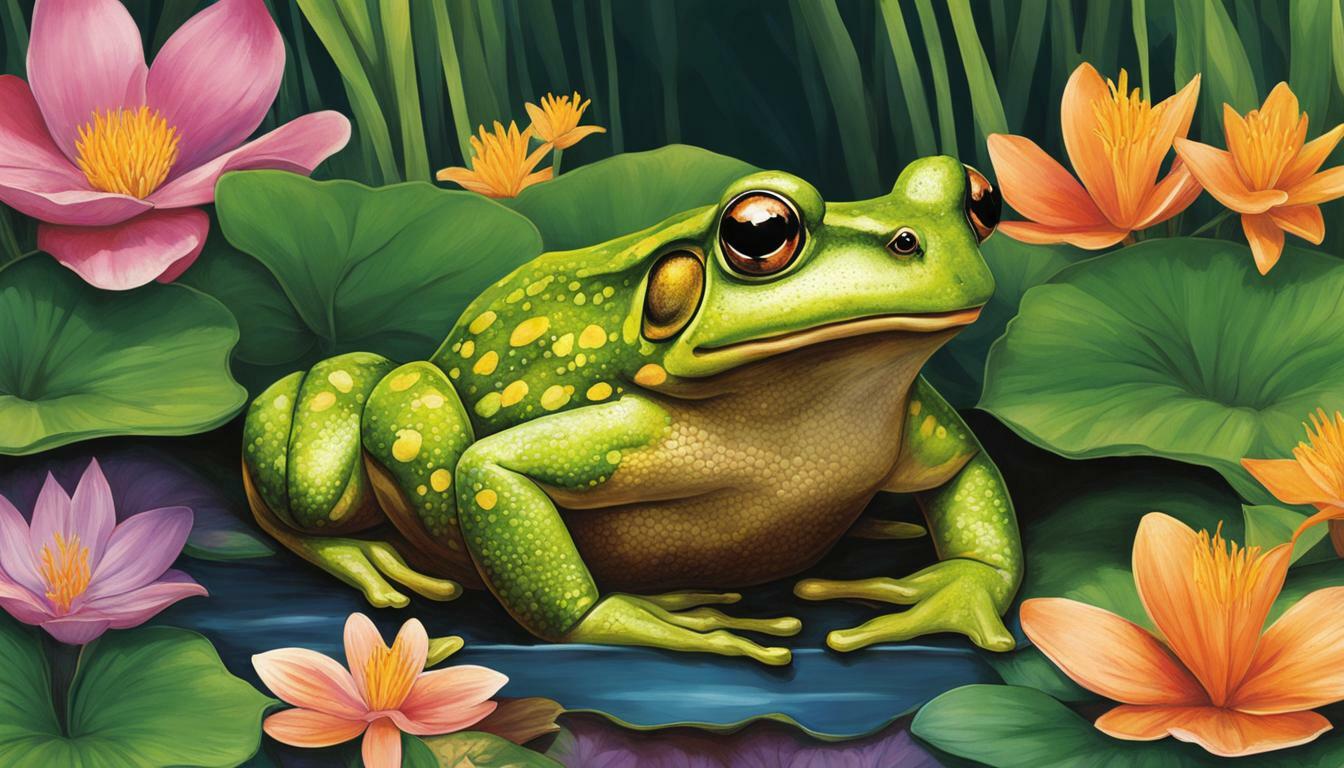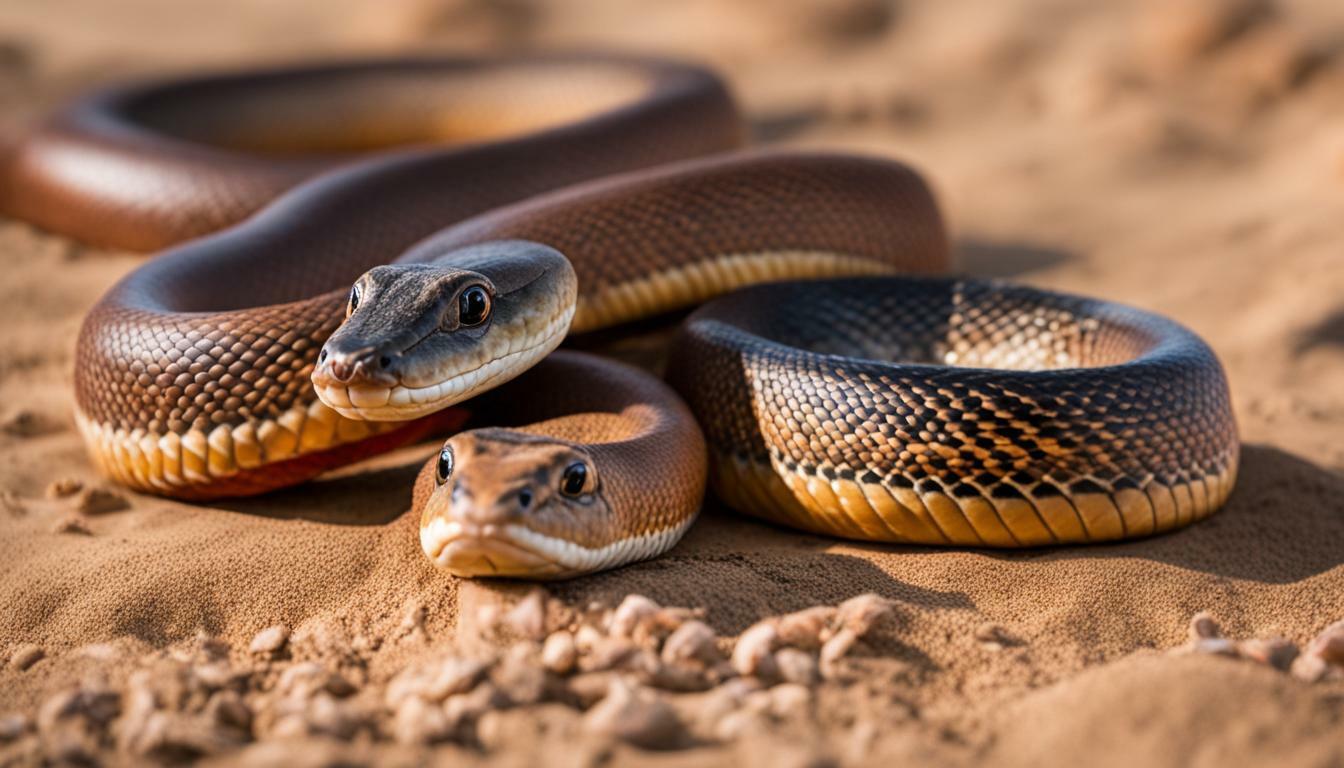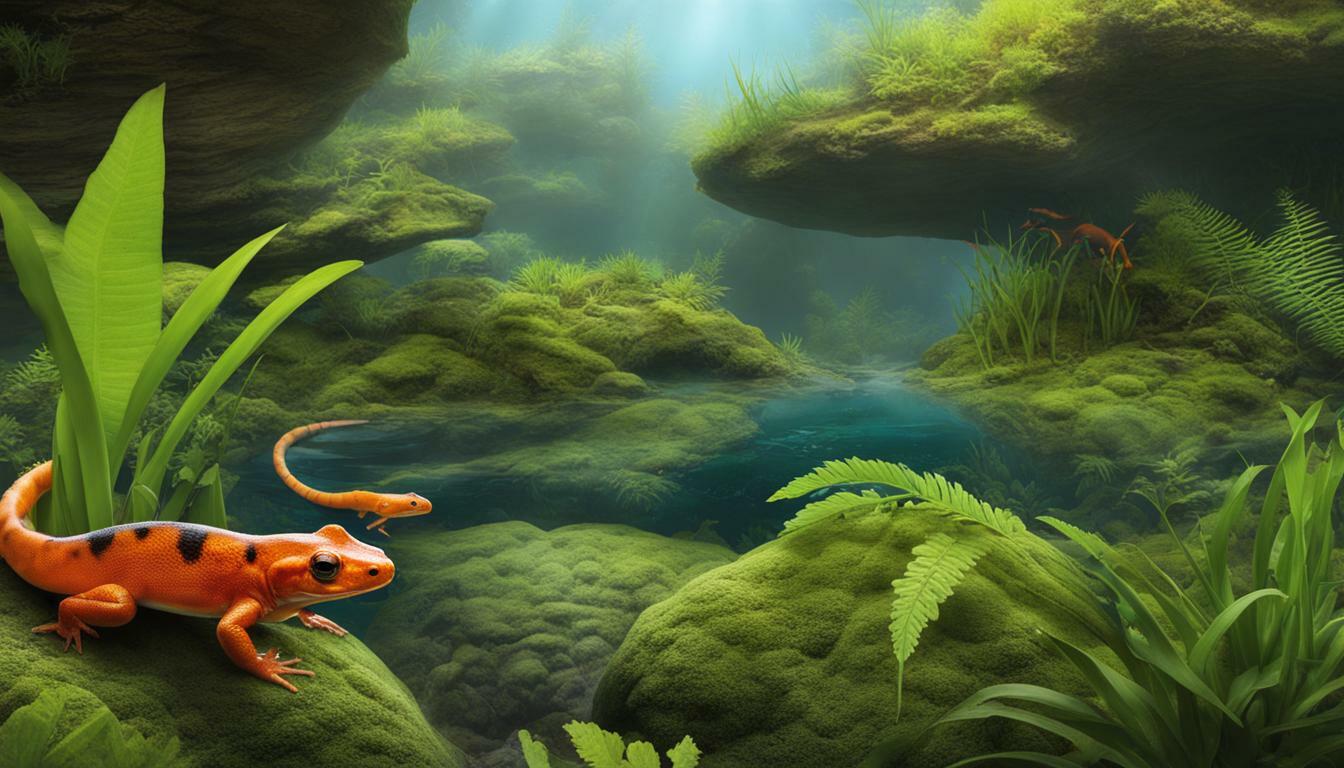Welcome to the fascinating world of amphibians! If you’ve ever wondered about the differences between toads and frogs, you’re in the right place. These two creatures may look similar, but they are actually quite distinct in many ways. In this article, we’ll explore their unique characteristics and learn how to tell them apart.
Key Takeaways:
- Toads and frogs are both types of amphibians.
- Toads typically have drier, bumpier skin than frogs.
- Frogs are better adapted for jumping and swimming than toads.
- Both toads and frogs play an important role in our ecosystem.
Understanding Amphibians: An Introduction
Amphibians are a unique and fascinating group of animals that are well adapted to living both in water and on land. They are typically characterized by their smooth, moist skin, webbed feet, and ability to breathe through their skin. Amphibians are also well-known for their remarkable metamorphosis from a water-breathing larva to an air-breathing adult.
There are over 7,000 species of amphibians in the world, divided into three major groups: frogs and toads, salamanders and newts, and caecilians. While each group has its own specific characteristics, all amphibians share a number of common traits, including the ability to absorb water and oxygen through their skin, their reliance on aquatic environments for reproduction, and their sensitivity to environmental changes.
Despite their importance in both aquatic and terrestrial ecosystems, many amphibian populations are currently declining due to habitat destruction, pollution, and other human activities. As such, it is important that we understand and appreciate the unique characteristics and importance of these fascinating creatures.
So, whether you are interested in the striking colors and patterns of Poison Dart Frogs or the intriguing behavior of Surinam Toads, there is much to discover about amphibians and their crucial role in our natural world.
Frog Species and Characteristics
When you think of amphibians, frogs are likely the first creatures that come to mind. With over 7,000 known species, they are one of the most diverse groups of vertebrates on Earth. From tiny tree frogs to the massive Goliath frog, these hopping creatures have captured the hearts of people around the world for generations.
So what makes a frog a frog? These aquatic creatures are defined by a few key characteristics. First and foremost, they have moist skin that allows them to breathe through their skin as well as their lungs. Additionally, they have long hind legs, webbed feet, and no tail. Their eyes sit on the top of their head, giving them a nearly 360-degree view of their surroundings, and their tympanic membrane (or eardrum) is visible on the outside of their body.
But beyond these defining traits, there is a world of diversity to be found among frog species. Some of the most fascinating and unique frogs include the Poison Dart Frog, which gets its name from the toxic secretions on its skin, and the Glass Frog, known for its transparent skin that allows you to see its internal organs.
Another interesting fact about frogs is that they are indicator species, meaning their presence (or absence) can help us understand the health of their ecosystem. They are also important for pest control, as they eat insects like mosquitoes that can carry disease.
| Species | Characteristics | Facts |
|---|---|---|
| Poison Dart Frogs | Brightly colored, toxic secretions on skin | A single Golden Poison Dart Frog carries enough poison to kill up to 10 humans. |
| Goliath Frog | One of the largest frogs in the world, can grow up to a foot long | They are often hunted for their meat in parts of Africa. |
| American Bullfrog | Green or brown coloring, large size | They are often used for dissection in biology classes due to their size and availability. |
Overall, frogs are an incredibly diverse group of animals with unique characteristics and important roles to play in the environment. By learning about their species and characteristics, we can better understand and appreciate the fascinating world of amphibians.
Toad Species and Characteristics
Toads may look similar to frogs in many ways, but they have distinguishing features that set them apart. For instance, toads have rough and bumpy skin, while frogs have smoother skin. They also have shorter hind legs than frogs and are adapted for a more terrestrial lifestyle.
There are various species of toads, each with its unique characteristics and habitat preferences. One of the most widespread species of toads in North America is the American Toad. This toad is easily recognizable by its brown or grayish skin with warts and its distinctive call that sounds like a long musical trill.
| Toad Species | Characteristics | Habitat |
|---|---|---|
| American Toad | Warty skin, long musical call | Forests, grasslands, wetlands |
| Surinam Toad | Flat, pancake-like body, excellent camouflaging skills | Rivers, streams, swamps |
| Sonoran Desert Toad | Large, stocky body, secretes toxic venom from glands behind the eyes | Semi-arid regions, deserts |
Unlike frogs, which lay their eggs in water, many toad species lay their eggs on land. The eggs are enclosed in a long chain covered with gelatinous material to keep them moist. Once the tadpoles hatch, they go through a metamorphosis process where they develop into adult toads.
Toads are also known for their unique behaviors. For example, the male toad will sometimes sit on top of the female during amplexus, the mating process, to protect her from other males.
Did you know? The Colorado River Toad is one of the largest toads in North America and can grow up to 7.5 inches long.
Differentiating Between Toads and Frogs
While toads and frogs may seem similar at first glance, they actually have several distinguishing features. Let’s explore some of the key differences between these two amphibian species.
Physical Variations
One of the most obvious ways to differentiate between toads and frogs is by their physical appearance. Toads typically have dry, bumpy skin with a warty texture, while frogs have smoother skin that appears moist or slimy. Additionally, toads usually have shorter legs and wider bodies, while frogs have longer legs and slimmer bodies.
Habitat Preferences
Toads and frogs also differ in their preferred habitats. Toads tend to live on land and are often found in drier environments, such as deserts or grasslands. Frogs, on the other hand, typically live near water sources, such as ponds or streams.
Reproductive Strategies
When it comes to reproductive strategies, toads and frogs also have some distinct differences. Toads lay their eggs in strings or chains, while frogs lay their eggs in clusters or masses. Additionally, male frogs tend to use vocalizations to attract mates, while male toads rely on physical cues, such as color changes or mating calls.
Vocalizations
Speaking of vocalizations, both toads and frogs have unique calls that can help differentiate between the two. Toads typically have a deep, throaty croak, while frogs have a high-pitched chirping or trilling sound.
By understanding these key differences between toads and frogs, you can better appreciate their unique characteristics and the important role they play in our ecosystem.
Environmental Importance of Toads and Frogs
Both toads and frogs play a vital role in the ecosystem. They act as natural pest controllers, consuming a large number of insects, slugs, and snails. This makes them important allies for gardeners and farmers in managing insect populations.
Additionally, toads and frogs are considered indicator species, meaning that their presence or absence can indicate the health of an ecosystem. They are highly sensitive to changes in their environment, particularly changes in temperature, water quality, and habitat destruction. As a result, their populations can serve as a warning sign for potential ecological issues that may affect other species, including humans.
Given their important role in the ecosystem, conservation efforts have been put in place to protect toads and frogs from habitat destruction, pollution, and other threats. These efforts involve restoring and creating suitable habitats, implementing measures to reduce vehicle collisions, and monitoring populations to gain a better understanding of their status and distribution.
By understanding the environmental importance of toads and frogs, we can appreciate the crucial role they play in maintaining the balance of our natural world. Through conservation efforts and education, we can work towards creating a sustainable future for these fascinating and unique creatures, and the ecosystems they call home.
So, whether you’re team toad or team frog, it’s clear that both species have an important place in our environment and should be valued and protected.
Conclusion
As we’ve explored in this article, understanding the difference between toads and frogs is essential in comprehending the unique characteristics of these fascinating creatures.
From their physical variations and habitat preferences, to their vital role in pest control, and their indicator species status, toads and frogs play a crucial part in our ecosystem.
By learning more about these remarkable amphibians, we can appreciate their contributions to the environment and the importance of conservation efforts to protect them for future generations.
So, what are you waiting for?
Take some time to discover the exciting world of toads and frogs. Whether you’re exploring a local pond or reading up on the latest research, there’s always more to learn about these incredible creatures.
FAQ
Q: What is the difference between a toad and a frog?
A: While toads and frogs belong to the same amphibian group, there are some key differences between them. Toads typically have drier, bumpier skin, shorter hind legs, and prefer a terrestrial lifestyle. Frogs, on the other hand, have smooth, moist skin, longer hind legs built for jumping, and are more aquatic in nature.
Q: How can I tell if a frog or a toad is poisonous?
A: Both frogs and toads have species that can be poisonous, but there are some general visual cues to look out for. Poisonous frogs often display bright colors and patterns as a warning to potential predators. Toads, on the other hand, tend to have rougher skin and may secrete toxic substances when they feel threatened. It’s always best to admire these creatures from a safe distance and avoid touching them.
Q: Do toads and frogs have the same reproduction process?
A: While both toads and frogs go through a similar life cycle, their reproduction processes can differ slightly. Frogs typically lay their eggs in clusters in or near water, and their tadpoles develop into frogs while spending time in the water. Toads, on the other hand, lay their eggs in long strings or chains and their tadpoles have a longer development period, often spending more time on land than in the water.
Q: Are toads and frogs nocturnal animals?
A: Many species of both toads and frogs are nocturnal, meaning they are most active during the nighttime. This behavior allows them to avoid predators and take advantage of the cooler temperatures and increased moisture that can be found during the night. However, there are also diurnal species that are active during the day, so it depends on the specific species.
Q: Can frogs and toads communicate through vocalizations?
A: Yes, frogs and toads are known for their vocalizations which play a crucial role in communication. Male frogs produce a variety of sounds, including calls and choruses, to attract females and defend their territory. Toads also have a unique croaking sound that they use for similar purposes. Each species has its own distinct call, allowing individuals to identify others of their kind.



